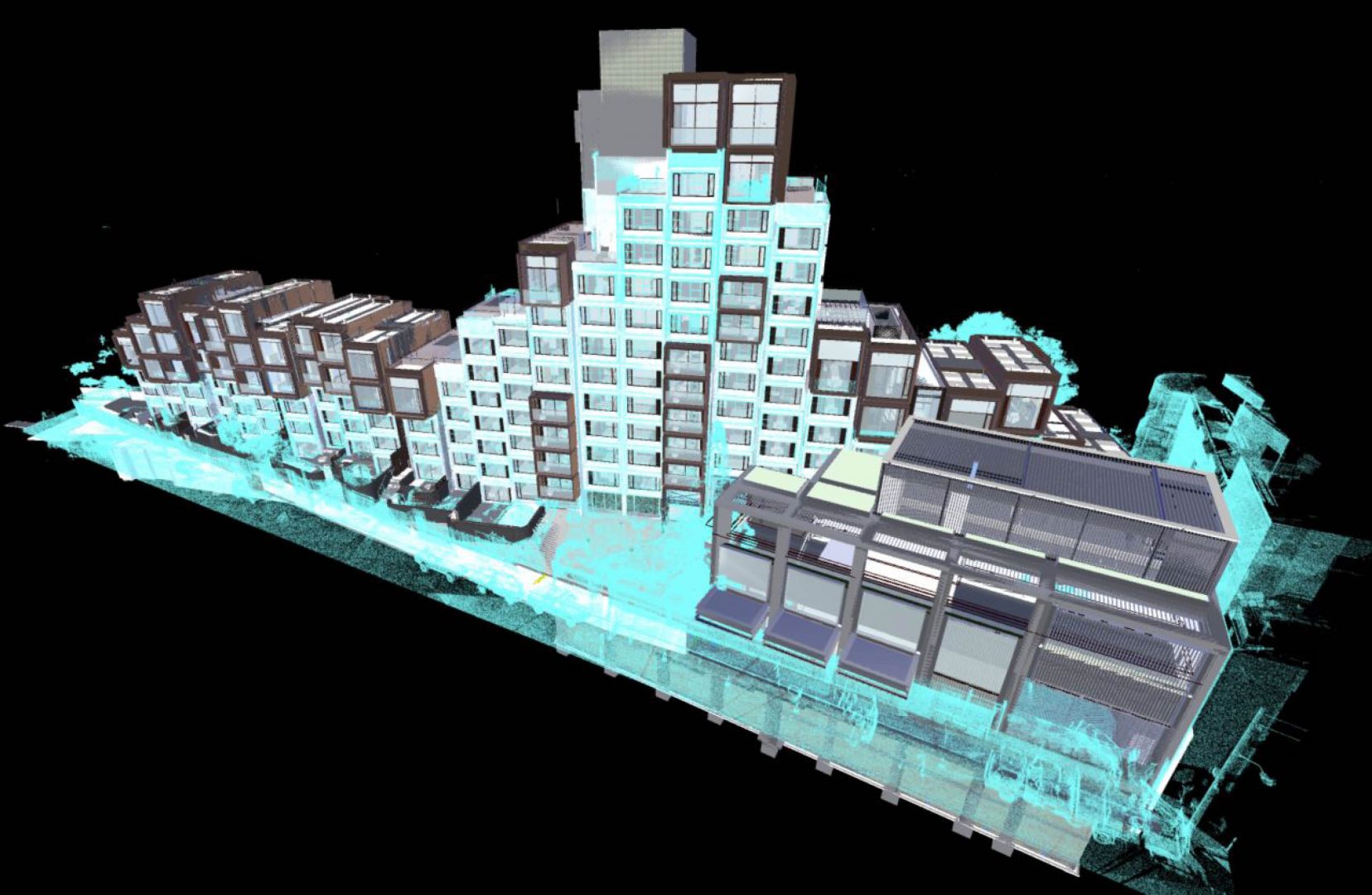Optimising Client Outcomes with Digital Design
As the construction industry rides the rise in digital technologies, our in-house digital design team is evolving the way we operate. Driven by tech evolution, industry push, and the desire for smarter builds, technology is propelling practices to optimise construction and achieve greater value, efficiency and lower lifecycle costs.
At RCC, we’re continually innovating to stay competitive in this highly ambitious marketplace. Here’s how digital design is changing the way we work, from inception to completion.
THE NEW TECH-SAVVY LANDSCAPE
Responding to the latest regulatory changes, we are fine-tuning our processes and training to ensure we’re digitally deft to seize future opportunities. This will enable us to stay ahead of the game, given that 57% of class 2 builders and 48% of designers are currently in a basic stage of digitalisation. The industry is set to take ten years to reach digital maturity.
Our Head of Design and Innovation, Samantha Kuiper, emphasises the importance of integrating digital design into current delivery methodologies to boost programme outcomes for the future.
“We believe in embracing technology and industry change. We’re not waiting until digitalisation is a directive – we see the opportunities in technological innovation and are taking a proactive approach to embedding digital design into our processes.”
Sam Kuiper, RCC’s General Manager – Design & Innovation
 As digital design makes its macro mark on large-scale infrastructure projects, we integrate it into the company’s actions, so when regulation is a reality, RCC is ahead of the game. To complement traditional design, we embed technologies like 3D modelling, training and development.
As digital design makes its macro mark on large-scale infrastructure projects, we integrate it into the company’s actions, so when regulation is a reality, RCC is ahead of the game. To complement traditional design, we embed technologies like 3D modelling, training and development.
BIM AND DIGITAL ENGINEERING
A Building Information Model (BIM) management process allows us to oversee graphic and non-graphical information from end to end on each construction project. It is the core conduit that connects multiple disciplines and different digital design principles together. In other words, BIM is the project bible; the go-to for driving efficiency, value for money, productivity and innovation. Australia’s BIM strategic framework outlines building delivery and management to create standardisation and drive the industry forward.
INTERNAL DRIVERS
Why do we employ digital design? Simply put – to stay competitive and relevant. We test and confirm existing and future designs to get more precise and predictable project information and reusable structures and insights. Investigating cross-function data generates more extensive understanding, which results in superior delivery and commercial decision making. Digital design also improves aspects of communication and visibility between our stakeholders, enabling us to overcome challenges prior to works commencing.
EXTERNAL DRIVERS
Outside RCC, digital design has a three-fold drive: growing client demand, the industry’s need for driving efficiencies and the ANZ Compliances, ISO/AS 19650 Parts 1-6.
Digital design also helps increase accuracy, boost project delivery time, detect discrepancies and work around contingencies such as rain events. With better project visibility, reliability and control, it allows for greater accuracy, integration and better client outcomes. Allowing oversight of the concept, construction and commissioning stages, digital design assists in investigating obstacles to mitigate risk and keeps projects aligned to the original scope.
OUR APPLICATION OF DIGITAL DESIGN WITH SIRIUS
The Sirius building is a Sydney icon, a stalwart of the city’s skyline. Designed to counterpoint the iconic presence of the Sydney Opera House across Circular Quay, the Sirius apartments were conceived in a period when the Brutalist idiom dominated architectural thinking and practice internationally.
JDH Capital engaged us to evolve this piece of history and harmonise the Brutalist origins with new additions and materials. Using various programs, we produced the digital components of the Sirius Project.
 DURING ECI PHASE
DURING ECI PHASE
Using digital design, we created visualisations to communicate how the project will redefine modern living. By combining the architectural, structural and services models, teams analysed the design geometry to understand the overall design, and the constructability of the proposed works.
 We used Navisworks Manage to run an object clash detection between the consultant’s designs. The Revizto cloud platform was used to track and resolve any design issues before site installation, whilst streamlining digital coordination between our teams.
We used Navisworks Manage to run an object clash detection between the consultant’s designs. The Revizto cloud platform was used to track and resolve any design issues before site installation, whilst streamlining digital coordination between our teams.
DURING DELIVERY
We used a BIM federated model to amalgamate the architectural, structural, mechanical, electrical, hydraulics and fire models. This was viewed by our team members using Navisworks Freedom. We then ran clash tests and progressed issues through Revizto, where relevant team were assigned the clashes.
Point cloud scans lined into the federated model allowed us to pinpoint existing building elements and optimise the design. With the Revizto Mark Ups tool, we flew through the model in 3D. When we came across an area to review, we pinned a ‘Mark up issue,’ which we then turned into a report and distributed to teams to consolidate their models.
DURING CONSTRUCTION
With the Sirius project in the construction stage, we will implement Augmented Reality (AR) and Smart Reality capturing technologies. AR will facilitate a pre-install Q&A between the RCC team and trades to manage and mitigate on-site risk. Improved reality capturing through remote devices (Revizto) and computer vision (Build AI) will continue to optimise compliance checks through post-install and build recording.
Using a 4D model, we will track any materials procured, as well as monitor the installation of specific elements and scenario testing methodologies to prove viability. This will help us visualise our construction sequencing, identify errors and optimise the path of our works.
INTERNAL BENEFITS OF DIGITAL ENGINEERING AND BIM
These technologies allow us to make better decisions quickly, optimise design, automate engineering and reduce the risk involved in off-site and on-site construction. These functions make us more innovative across all projects and within our team, consultant and stakeholder collaborations. They promote more efficient delivery time, proactive risk management through early recognition and minimise rework by finding coordination challenges before fabrication and installation.
Digital simulation allows more forethought and implementation to optimise health and safety. Virtual site simulation facilitates better planning and site logistics and gets all stakeholders on the same page. These technologies also encourage pinpoint accuracy in estimating the costs of supply orders and staging trades.
CLIENT BENEFITS OF DIGITAL ENGINEERING AND BIM
Outside RCC, superior client satisfaction and end-user results are crucial benefits of executing these technologies. Visualisation and simulation help clients fully comprehend their project’s design and construction process, as well as mitigate risks early. This provides an efficient way of gathering data and managing their assets, which boosts confidence and offers more certainty.
After we complete projects, BIM and digital engineering assist us in better systemising data for asset and facilities management and quality maintenance records. We ensure excellence by using ‘Next Gen’ digital technologies like Cloud tech, Augmented Reality and AI to design and build. A win: win.
BARRIERS TO GOING DIGITAL
Making digital design second nature involves ironing out a few kinks. When our supply chains are at different stages of digital aptitude, our subcontractors can’t match the digital capabilities for delivery. We bridge this gap by sourcing expertise and training our project partners.
The Digitisation of Construction Report shows cost impedes the adoption rate. 67% of builders and designers claim that the expense of buying and licensing software is a barrier. This explains the reluctance of builders and consultants to purchase the software and upskill their workers.
Like any significant shift, there’s always resistance. Age demographics and cultural norms within the construction industry contribute to slow tech adoption. At RCC, we know that in the face of new ideas, complacency and scepticism are common. That’s why we adopt patience, communication and education to work around this.
The construction industry has clear delineation between disciplines, so unified workflows linking engineers, subcontracting firms, designers, and general contractors can be challenging.
We navigate all obstacles by allaying fears to arrive at digital acceptance and adaptation. Having already transformed countless industries, the evolution of digital design in the construction sector will revolutionise project outcomes for clients.
IN-HOUSE DIGITAL LEARNING
Our tiered training in digital design training informs our actions business-wide. Our Digital Engineering 101 Fundamentals & Concepts course gives all our people an entry-level understanding of BIM and digital engineering and how we use them. Digital Engineering 102 Project BIM Use covers the basics, and Digital Engineering 103 for Project BIM Management is our advanced module. Both teach the software skills required to competently coordinate the digital aspects of a project and manage the BIM data efficiently and effectively.
“Our training is tiered to build robust understanding. The tiers tailor to the level of detail needed for each position and each person’s familiarity with the software. We also factor in the nature of the project they’re looking to support.”
– Dean James, RCC’s Digital Design Manager
 At RCC, these training initiatives bring global digital design trends in-house. They help us shape our people, so they’re poised to further the future of digital construction.
At RCC, these training initiatives bring global digital design trends in-house. They help us shape our people, so they’re poised to further the future of digital construction.
FORDING THE DIGITAL FRONTIER
At RCC, we’re seizing the digital reins – initiating a proactive approach to an increasingly tech-led and data-driven shift. As digital design continues to evolve in the construction space, we’re developing new skills; training, educating and implementing technology functions to achieve the best results for our clients.
To stay ahead of trends and strengthen our innovation, we empower our people with cutting-edge digital design tools to ensure our end-users occupy safe, cost-effective and reliable buildings. We’re digitally designing a smarter way to build.
Share our digital design innovation in The Urban Developer.